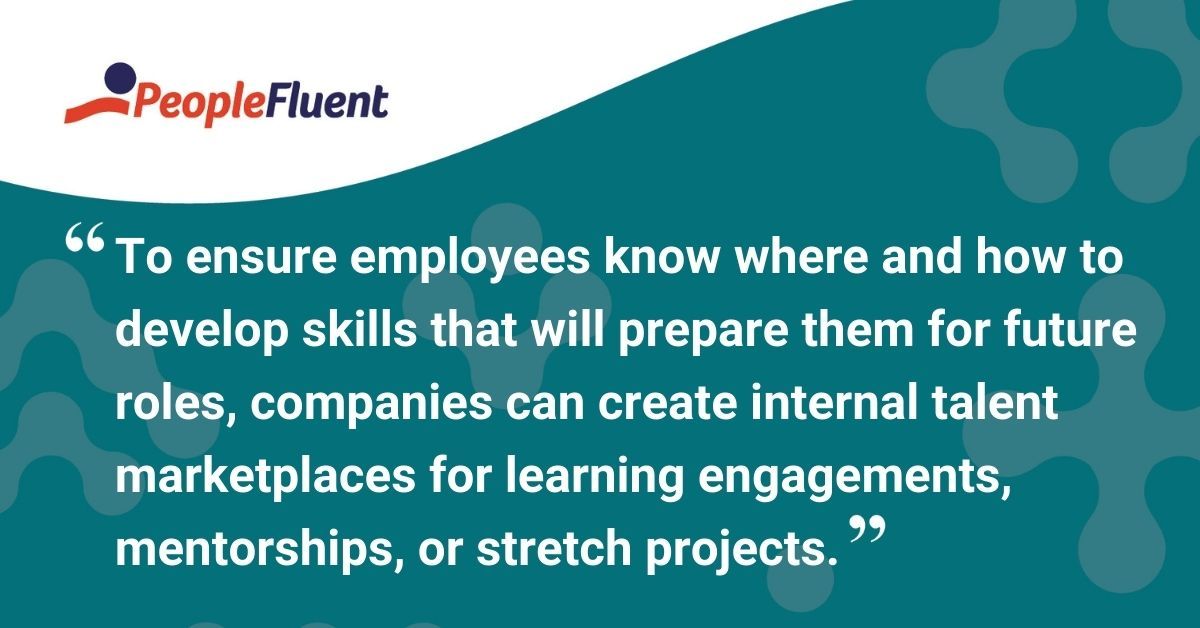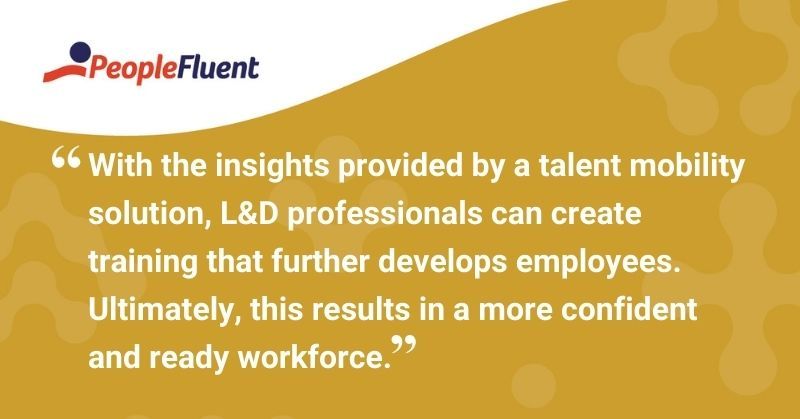Published: Dec 10, 2020Time to read: 4mins Category: Insights
3 Easy Ways Talent Mobility Can Increase the Effectiveness of Learning
In order to overcome the challenges of working under lockdown, company leaders continue developing new ways to keep employees productive and engaged. Progressive companies should be committed to developing a talent mobility strategy that helps employees identify and cultivate the skills or competencies that lead to new opportunities. It also gives L&D teams a chance to increase the effectiveness of their learning programs.
When employees are given the opportunity to achieve new goals or build skills, engagement and retention levels are improved. In fact, 94% of employees said they would stay with a company longer if it invested in their learning and development.
The goal of L&D is ultimately to develop people so they’re better prepared, more confident, more productive, and more successful in their roles and careers. Unfortunately, employees with hidden talents or strengths may often be overlooked for development opportunities.
So, how can you find and develop these people? Read on to discover how a strong talent mobility program can help.

More from the blog: ‘Learning From Each Other: How Learning Design Can Benefit Talent Paths’
1) Enhance Collaboration Between HR and Learning
According to LinkedIn’s Global Talent Trends 2020 report, 52% of talent professionals see room for improvement regarding the training and development programs at their companies. During current times—when resources may be restricted and ‘business as usual’ has taken on a new form—one of those improvements should be fostering deeper alignment between your HR and Learning teams.
Enhancing collaboration between HR and L&D will bolster your talent development initiatives by giving talent managers a chance to see how an employee would perform across various roles. The data compiled from these various learning and performance activities can then be used to identify internal candidates for lateral or upward progression.
Talent managers can work with L&D teams to:
- identify the need for new learning programs
- create new learning opportunities that are needed or wanted by employees
As an added benefit to the organization, any career enhancements that result from it are proof that skill development pays off.

You might also like: ‘5 Strategies to Improve Talent Mobility’
2) Increase Visibility and Interest of Learning Initiatives
It’s not always simple for L&D teams to ensure that workers have visibility or easy access to needed (or wanted) learning materials. Employees might only engage with your learning materials to satisfy required training on an ad-hoc basis. They may also be unaware of additional talent development opportunities available to them.
To ensure employees know where and how to develop skills that will prepare them for future roles, companies can create internal talent marketplaces. These talent marketplaces can be shared with employees who are interested in learning engagements, mentorships, or stretch projects.
To help build learner interest, L&D professionals should actively seek ways to promote self-directed learning. This gives employees the chance to take advantage of and engage with self-led learning resources.
You can put this into practice by providing learners with additional, related eLearning resources after they’ve attended an instructor-led course. Drive attendance by sending out internal communications and hosting information sessions on upcoming training and development initiatives.

Keep reading: ‘The Three Cs: Talent Management Strategies to Engage Your Multi-Generational Workforce’
3) Discover Learning ROI From Talent Mobility
The successful transition of people from one role to the next is the goal, and hopeful outcome, of learning. With the insights provided by a talent mobility solution, L&D professionals can create training that further develops employees. Ultimately, this results in a more confident and ready workforce.
Over the years, learning professionals have continued making attempts to measure the impact of learning programs. Talent mobility solutions allow L&D to enjoy the fruits of its labor. You can see how people are growing, stretching, serving new roles, or moving up the ladder. This is because talent mobility technology serves as a conduit to your employees’ passions, interests, and talents.
Done right, this approach can lead to a reduction in turnover, an increase in employee engagement, and an overall improvement in employee productivity.
Related reading: ‘What Is Talent Mobility? Plus, What It’s Not!’
Ready to help your employees discover their hidden talents?
Allow your people to take control of their career development journey with talent mobility solutions that help increase the effectiveness of your organization’s learning programs.